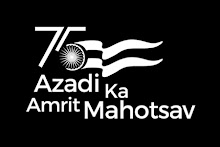

Projected to expand by 8.6% to a record $1.73 trillion (around `80 trillion) in the current fiscal, according to the Central Statistical Organisation (CSO), sustaining its growth trajectory.
At this level of nominal gross domestic product (GDP), India's per capita income works out to about $1,200, effectively making it a middle-income country. While this will enhance the country's global standing, it will be less eligible for soft loans from multilateral institutions for social sector projects and, hence, make it that much more difficult for the government to generate the desired resources.
The economy's size was $1.4 trillion in 2009-10 and its per capita income estimated at $1,019. The country crossed the per capita threshold of $500 in 1999-2000. During the current fiscal, the farm sector is expected to see robust growth of 5.4% as against 0.4% a year ago due to a normal monsoon and bumper harvests. Industry and the services sector are expected to hold on to their robust growth at 8.1% and 9.6%, respectively, compared with 8% and 10.05% a year ago.
Analysts believe rising inflation and concerns on governance are posing a risk to this growth trajectory. With private consumption providing the stimulus, analysts believe growth will decelerate in the next fiscal as the effects of the recent round of rate hikes by the Reserve Bank of India (RBI) to tame inflation kick in. Private consumption, expected to contribute 57.6% to GDP in 2010-11, is projected to grow 8.2% compared with 7.3% a year ago, while government expenditure is expected to grow 2.6% in the current fiscal against 16.4% a year ago.
Overall consumption in the economy is expected to slow to 7.3% in the current fiscal from 8.7% in the previous fiscal due to lower government con- sumption. While the trend in overall investment is estimated to slow from 13.8% to 8.8%, growth in gross fixed capital formation--a better indicator for analysing current trends-is expected to edge up from 7.3% in the last fiscal to 8.4% in the current one.
Concerns have been raised, including by Prime Minister Manmohan Singh, over growth momentum being maintained next year. Singh, speaking at the second annual conference of chief secretaries last week, said even though India has weathered the global financial crisis relatively well, “inflation poses a serious threat to the growth momentum“. The stickiness in inflation has forced RBI to revise its year-end inflation estimate to 7% by March this year from its earlier projection of 5.5%, while it continues to tighten monetary policy.
Anticipating fresh interest rate increases by RBI, economists have marginally scaled down their growth projection for the next fiscal to 8.4% from 8.6%.However, they highlighted the bigger issue as “governance/corruption“ and its negative feedback loop on lack of policy progress. However, a higher than anticipated nominal GDP a `78.77 trillion may bring down the fiscal deficit as a percentage of GDP to 4.8%, against the budget target of 5.5%. Elections in key states such as West Bengal, Tamil Nadu, Kerala and Assam are due later this year.
At this level of nominal gross domestic product (GDP), India's per capita income works out to about $1,200, effectively making it a middle-income country. While this will enhance the country's global standing, it will be less eligible for soft loans from multilateral institutions for social sector projects and, hence, make it that much more difficult for the government to generate the desired resources.
The economy's size was $1.4 trillion in 2009-10 and its per capita income estimated at $1,019. The country crossed the per capita threshold of $500 in 1999-2000. During the current fiscal, the farm sector is expected to see robust growth of 5.4% as against 0.4% a year ago due to a normal monsoon and bumper harvests. Industry and the services sector are expected to hold on to their robust growth at 8.1% and 9.6%, respectively, compared with 8% and 10.05% a year ago.
Analysts believe rising inflation and concerns on governance are posing a risk to this growth trajectory. With private consumption providing the stimulus, analysts believe growth will decelerate in the next fiscal as the effects of the recent round of rate hikes by the Reserve Bank of India (RBI) to tame inflation kick in. Private consumption, expected to contribute 57.6% to GDP in 2010-11, is projected to grow 8.2% compared with 7.3% a year ago, while government expenditure is expected to grow 2.6% in the current fiscal against 16.4% a year ago.
Overall consumption in the economy is expected to slow to 7.3% in the current fiscal from 8.7% in the previous fiscal due to lower government con- sumption. While the trend in overall investment is estimated to slow from 13.8% to 8.8%, growth in gross fixed capital formation--a better indicator for analysing current trends-is expected to edge up from 7.3% in the last fiscal to 8.4% in the current one.
Concerns have been raised, including by Prime Minister Manmohan Singh, over growth momentum being maintained next year. Singh, speaking at the second annual conference of chief secretaries last week, said even though India has weathered the global financial crisis relatively well, “inflation poses a serious threat to the growth momentum“. The stickiness in inflation has forced RBI to revise its year-end inflation estimate to 7% by March this year from its earlier projection of 5.5%, while it continues to tighten monetary policy.
Anticipating fresh interest rate increases by RBI, economists have marginally scaled down their growth projection for the next fiscal to 8.4% from 8.6%.However, they highlighted the bigger issue as “governance/corruption“ and its negative feedback loop on lack of policy progress. However, a higher than anticipated nominal GDP a `78.77 trillion may bring down the fiscal deficit as a percentage of GDP to 4.8%, against the budget target of 5.5%. Elections in key states such as West Bengal, Tamil Nadu, Kerala and Assam are due later this year.




No comments:
Post a Comment